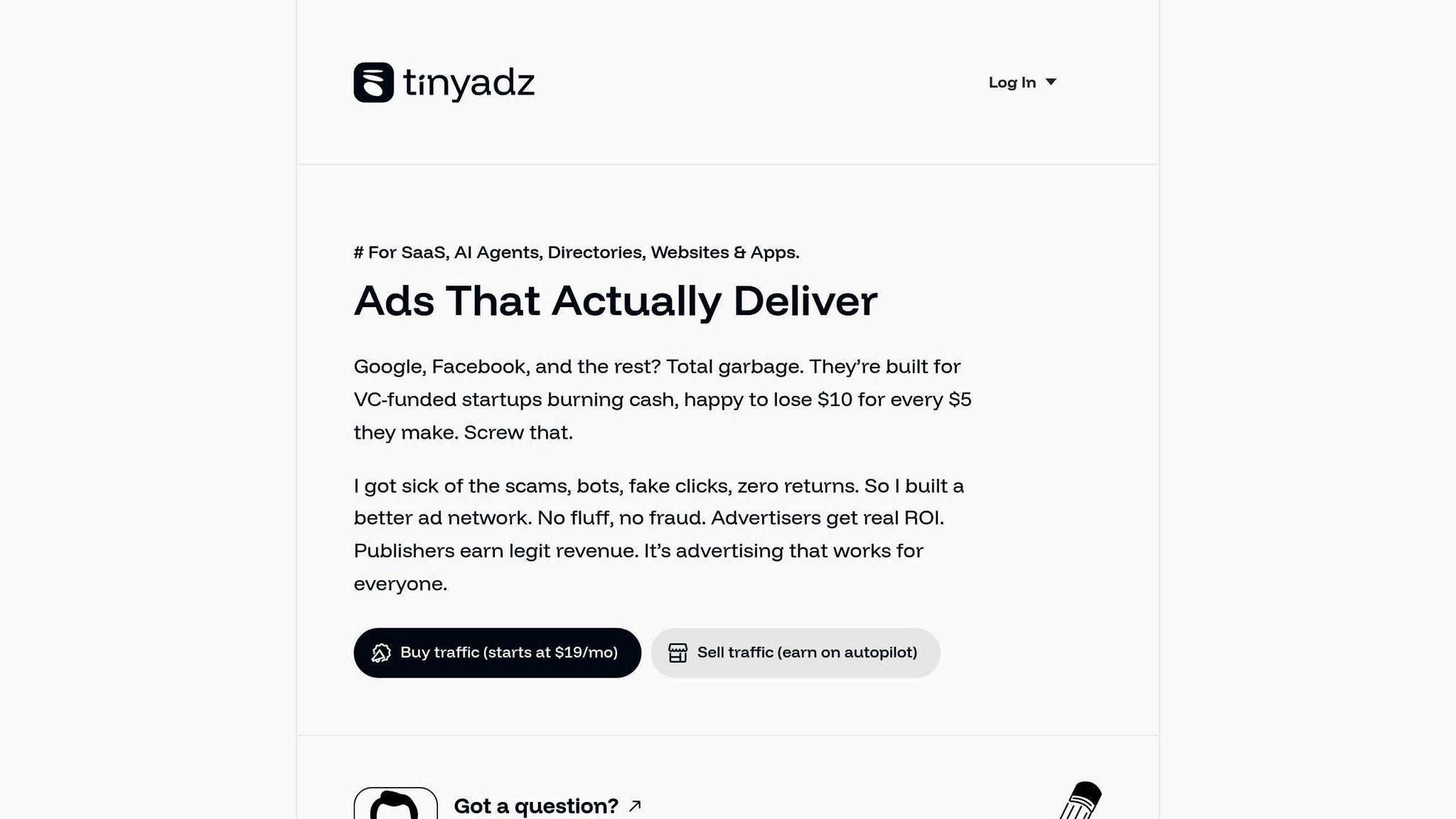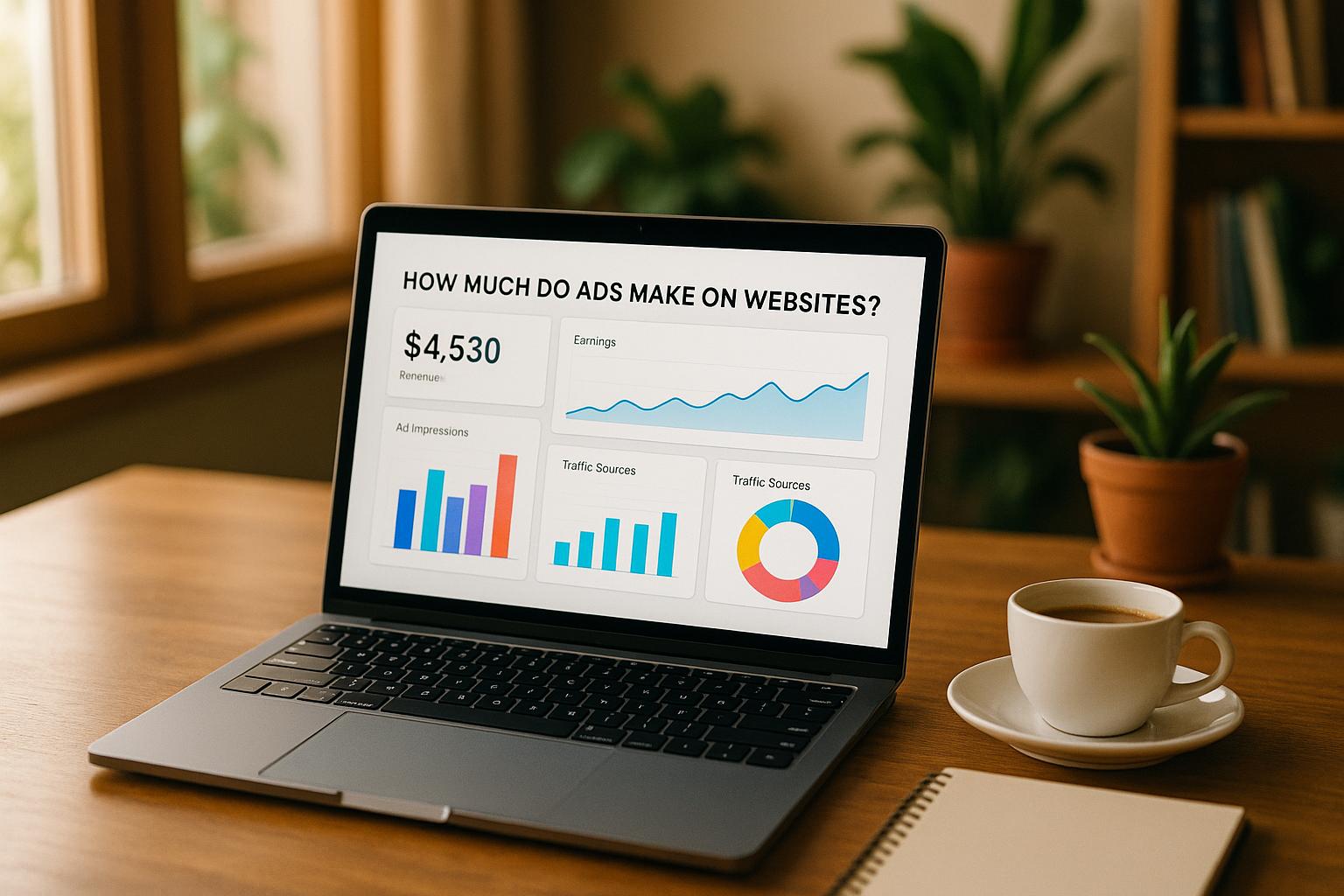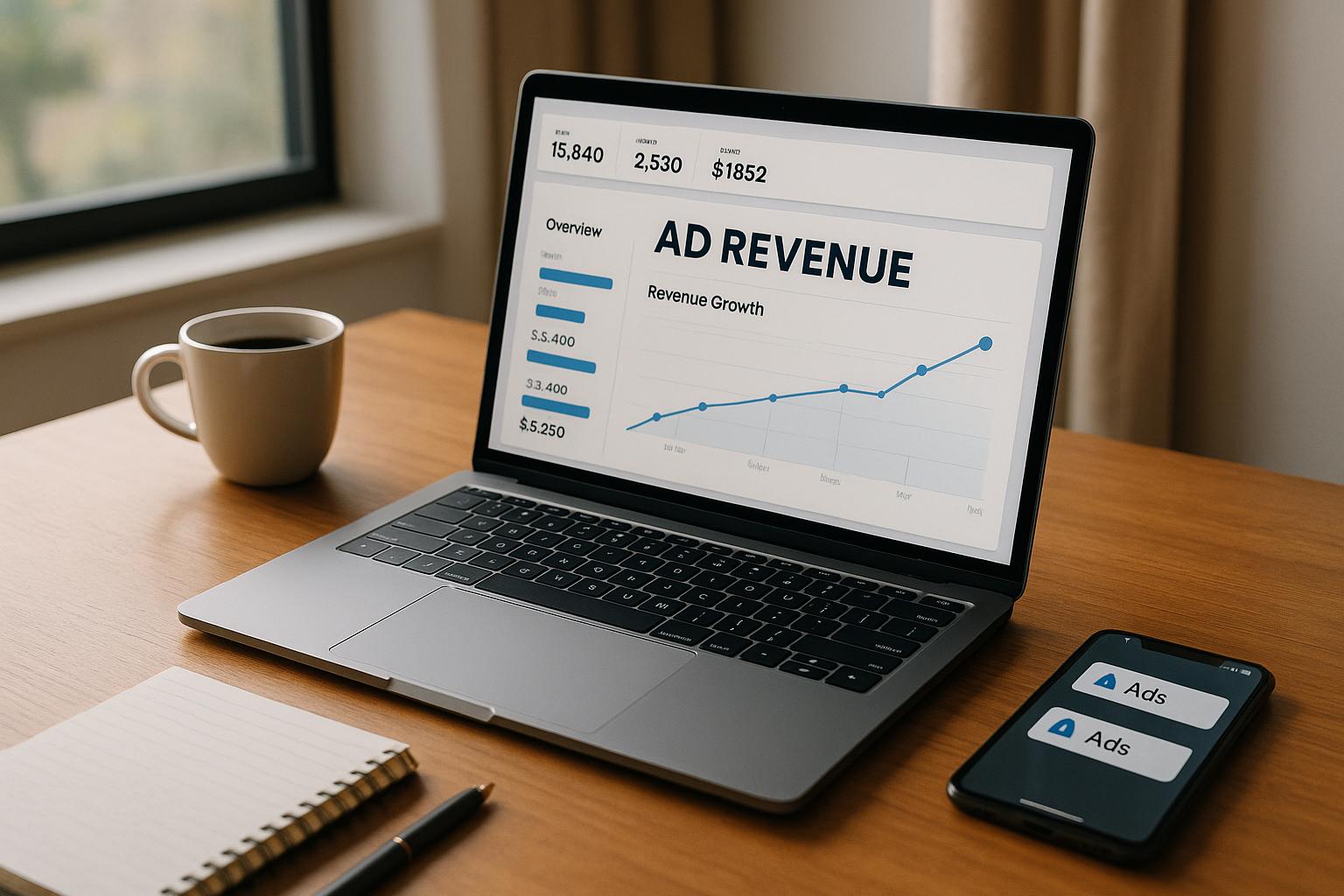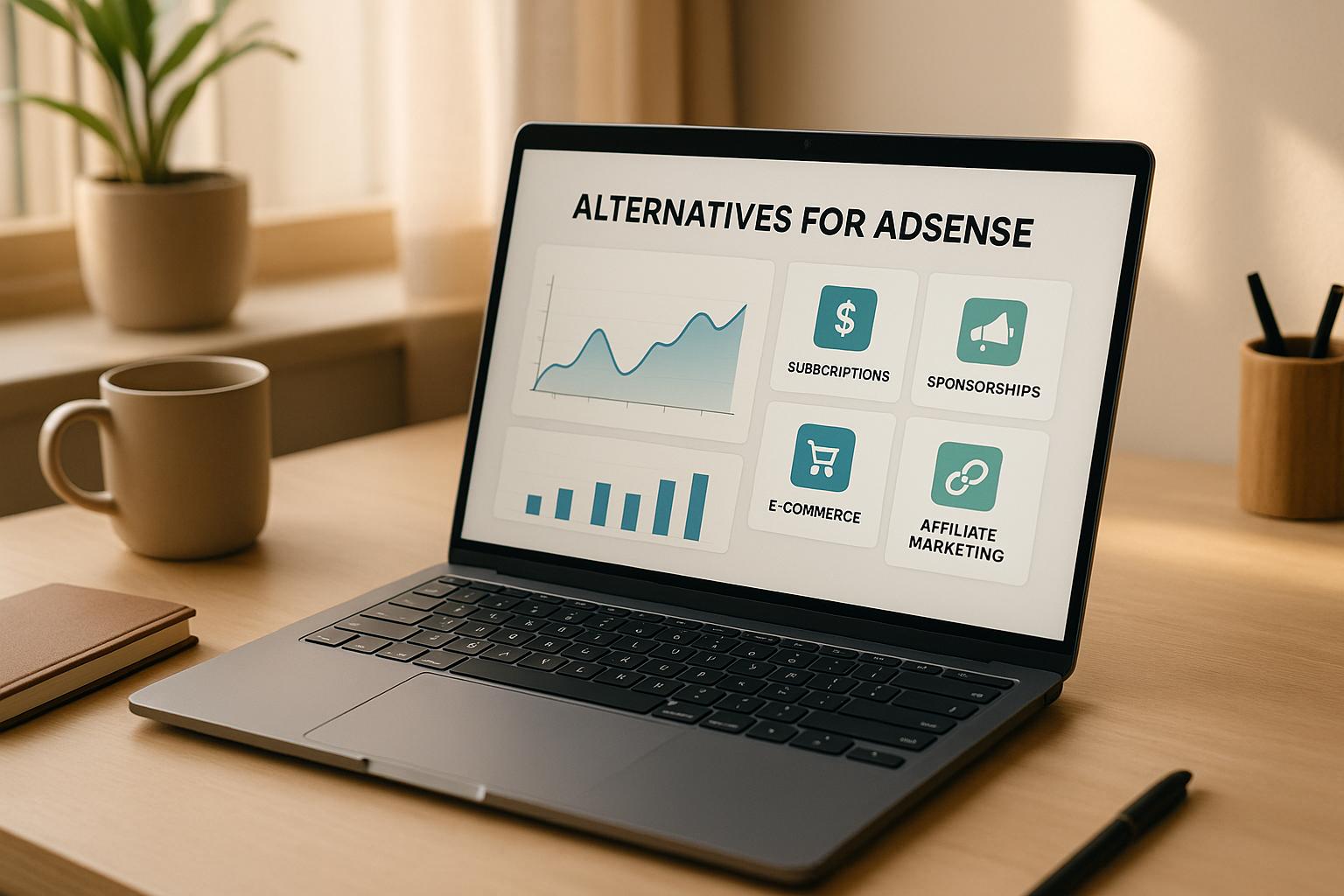Want to make money online? Posting ads could be your next big move. Here's why:
- Earn Passive Income: Once ads are set up, they generate revenue with little ongoing effort.
- Works for Small Creators: Even if you have a small audience, ad networks like TinyAdz connect you with advertisers.
- Fits Any Platform: Blogs, social media, newsletters, or websites - ads can work anywhere.
- Targeted Niche Revenue: Ads tailored to specific audiences often deliver better results and higher engagement.
- Low Barrier to Entry: No need for a massive following or advanced skills to start earning.
Ad posting allows creators to turn their content into a steady income stream while maintaining control over how ads integrate with their platforms. Whether you're a blogger, social media manager, or newsletter creator, this strategy can help you monetize your efforts effectively.
HIRING: POST LINKS and EARN $25 to $100 DOLLARS PER HOUR | MAKE MONEY POSTING LINKS ONLINE
Benefits of Getting Paid to Post Ads
Expanding on the points introduced earlier, posting ads as a monetization strategy offers a range of benefits. It's an accessible and flexible way to earn income while keeping full control over your content and how your audience interacts with it. These advantages make it a practical choice for building consistent, multi-channel revenue.
Passive Income Opportunities
One of the biggest perks of posting ads is the potential for passive income. Once ads are set up on your platform, they can generate revenue with minimal ongoing effort. This allows you to focus on creating quality content while the ads do the heavy lifting in the background. As your audience grows, so does your ad revenue, creating a self-sustaining income model.
"The main benefit of getting paid to post ads is accruing income to support your website... Getting paid motivates you to grow your website and serve your audience better." - Chisom Maduonuorah, Author
Even if the initial earnings are modest, they can still make a difference. For instance, a few dollars in the early months might be enough to cover basic expenses like web hosting. Starting out doesn’t require a large audience or significant investment, as many ad networks are open to new bloggers and smaller publishers, often without strict traffic requirements.
Beyond passive income, posting ads is highly adaptable, working seamlessly across various platforms.
Works Across Multiple Platforms
The beauty of ad posting lies in its versatility - it works on virtually any digital platform. Whether you’re running a blog, managing social media accounts, sending out email newsletters, or even hosting virtual events, there’s an ad format that fits. This flexibility allows you to diversify your income streams without having to master entirely new monetization methods.
For example, email newsletters can be particularly lucrative. General newsletters often fetch CPM rates of $10-$15, while niche newsletters can command $15-$25. In targeted B2B spaces, CPM rates can skyrocket to $100. These numbers highlight how platform-specific strategies can significantly enhance your earnings.
"Email newsletter advertising is one of the most efficient, yet overlooked ways to grow your revenue." - Passendo
Social media advertising also offers a budget-friendly way to earn. Most platforms charge only when users click on or view your ad. Additionally, they provide robust tracking tools, making it easy to see what’s working and refine your strategy accordingly.
Targeted Audience Engagement
Smaller publishers often have an edge when it comes to audience engagement. While larger platforms may reach more people, smaller creators frequently deliver higher engagement rates and better conversions. This is because you, as the publisher, truly understand your audience and can offer advertisers access to specific, well-defined demographics.
Connecting to multiple ad exchanges can increase ad revenue by 57% compared to relying on a single source. Additionally, video ads tend to generate 23% more revenue than traditional display ads, showing how choosing the right ad formats can make a big difference.
What sets smaller publishers apart is their flexibility. Unlike larger companies with rigid systems, you can quickly adjust ad placements, experiment with different formats, and build personalized relationships with advertisers. This adaptability often leads to stronger, longer-lasting partnerships, which can result in steady revenue over time.
Advertisers also benefit from working with niche publishers. Instead of running generic campaigns aimed at broad audiences, brands can target specific groups that are more likely to engage with their products or services. This precision not only boosts ad performance but also strengthens audience engagement, creating a win-win situation for everyone involved.
How to Get Started: Step-by-Step Guide
Starting with ad posting doesn't require a huge audience or advanced technical skills. The key is to build a solid foundation, pick the right platform, and set up your monetization system effectively. Here's how you can turn your content into a steady income stream by aligning your platform, audience, and ad strategy.
Know Your Audience and Platform
Before jumping into ad posting, it's critical to understand your audience and whether they're ready for monetized content. Make sure your content delivers real value and keeps your audience engaged. Start by reviewing your most popular posts - check which ones get the most comments, shares, and interactions. This will give you insight into what resonates most with your followers.
Once you’ve identified what your audience values, confirm that they’re engaged and loyal. Ads work best when they feel like a natural fit, so it’s important to ensure your audience will respond positively to them. Narrowing down your niche - whether it’s lifestyle, tech, education, or something else - can attract advertisers who align with your audience’s interests. A clear niche helps ensure your ad placements feel relevant and authentic.
When you’ve got a good understanding of your audience, you’re ready to move on to the next step: signing up with TinyAdz.
Sign Up with TinyAdz

After confirming your audience is ready for monetization, signing up with TinyAdz is quick and easy. This platform connects niche publishers with advertisers looking for engaged audiences. To get started, visit the TinyAdz website and click on the "Become a Publisher" button. The registration process is straightforward, with no complicated approval systems or high traffic thresholds to meet.
During the sign-up process, you’ll provide details about your platform, audience, and content focus. This information helps TinyAdz match you with advertisers whose products or services align with your audience. The platform also offers clear reporting tools, so you’ll have access to easy-to-read stats on ad performance and earnings from the very beginning.
TinyAdz supports a variety of monetization options, including banner ads, social media advertising, newsletter sponsorships, directory monetization, and even event-based revenue. You can choose the formats that best suit your content and audience. Once you’ve completed the registration, you’re ready to set up your ads and payment system.
Set Up Ads and Payment Details
Once approved, you’ll gain access to the TinyAdz publisher dashboard. This is where you’ll find all the tools and code snippets needed to place ads on your website, social media accounts, or newsletters.
Next, set up your payment details to ensure smooth and secure revenue collection. You’ll need to provide your banking information, tax details, and preferred payment schedule. Since you’re operating in the U.S., payments will be processed in U.S. dollars using standard banking systems. TinyAdz handles the technical side of payment processing, but it’s up to you to keep your account secure by using strong passwords and safe connections.
As you set up your ads, keep an eye on performance metrics. Use the dashboard to track which ad placements generate the most engagement and revenue. Experiment with different formats and positions to find what works best. The goal is to make ads feel like a natural part of your content, rather than a distraction. With a little testing and tweaking, you’ll be able to optimize your strategy for maximum results.
sbb-itb-957fd63
Match Ad Content with Audience Interests
Once you’ve nailed down your audience insights, the next step is making sure your ad content lines up with what they care about. It’s not just about driving revenue - it’s about keeping the trust and engagement you’ve worked hard to build. When ads feel relevant and useful to your followers, they’re more likely to interact with them. The trick is understanding what your audience truly wants and delivering ads that feel like a natural extension of your content.
Here’s why this matters: targeted ads can boost click-through rates by over five times, which isn’t surprising when you consider that 71% of consumers prefer ads tailored to their interests. When people see ads that align with their needs, they’re not just tolerating them - they’re actively engaging because those ads offer solutions to their problems.
How to Find Out What Your Audience Wants
To really understand your audience, you’ve got to go beyond the basics like age or location. It’s about digging into their behaviors, challenges, and motivations to figure out what drives their decisions. Use your previous audience research as a foundation to fine-tune your ad targeting.
Here are a few ways to uncover what resonates with your followers:
- Social media analytics: Platforms like Facebook Insights, Instagram Analytics, and Twitter Analytics can show you what’s working. Pay attention to which posts get the most engagement, when your audience is most active, and the topics that spark conversations. This data helps you understand not just what they like, but how and when they prefer to engage with content.
- Surveys and polls: Want direct feedback? Ask your audience! Use tools like Google Forms or Instagram story polls to gather insights about their challenges, interests, and preferences. It’s quick, easy, and gives you actionable information straight from the source.
- Website analytics: Tools like Google Analytics can reveal how visitors interact with your site. Look at metrics like time spent on pages, bounce rates, and conversion paths to figure out what keeps them engaged and what topics they care about most.
- Social listening: Pay attention to conversations happening in your niche. Monitor mentions of key topics, competitors, or industry trends to uncover what your audience is discussing. This gives you a raw, unfiltered look at their pain points and interests.
- Customer personas: Pull all this data together to create detailed profiles of your ideal audience members. Include things like their goals, challenges, preferred communication channels, and content preferences. These personas serve as a guide to ensure your ads align with what your audience actually wants.
When you use these strategies, your ads become more than just promotions - they become a natural and engaging part of your content.
Stay Transparent and Build Trust
Transparency isn’t just a good idea - it’s a legal requirement in the U.S. The Federal Trade Commission (FTC) mandates clear disclosures for sponsored content or paid promotions. That means using hashtags like #ad, #sponsored, or #partnership in social media posts and clearly labeling sponsored content on your website or newsletters.
"Trust isn't built by saying, 'We're the best.' It's built by showing proof, being transparent, and showing up consistently." – Julian Knox, Marketing & PR Coordinator, Blankoon Cocktails & Events
But building trust goes beyond just following the rules. 90% of consumers say authenticity matters when deciding which brands to support. Your audience can spot a fake endorsement from a mile away, so only promote products or services you genuinely believe in and that align with their needs.
Be upfront about both the benefits and the limitations of the products you’re advertising. For example, Thrive Digital Marketing Agency found that featuring unscripted client interviews - where an IT director openly discussed implementation challenges - doubled click-through rates compared to traditional benefit-focused campaigns. This honest approach resonated because it felt real and relatable.
User-generated content and testimonials are another way to keep it authentic. Ads featuring real customer stories have been shown to deliver a 300% higher click-through rate and reduce cost per acquisition by 50%. When possible, highlight genuine experiences from people who’ve actually used the product or service you’re promoting.
Consistency is also key. Your brand voice and values should stay the same whether you’re sharing personal insights or promoting a product. This helps your audience trust that your sponsored content is just as thoughtful and genuine as your regular posts.
Finally, engage with your audience when they have questions about sponsored content. If someone asks about your experience with a product, respond honestly - share what you liked and what you didn’t. This level of transparency builds credibility and strengthens your relationship with your followers.
Increase Revenue and Maintain Transparency
Boosting ad revenue while keeping user trust intact is a balancing act. With around 32.8% of users employing ad blockers and 88% avoiding sites after a bad ad experience, it's clear that poor ad implementation can drive users away. The key lies in optimizing ad placements and formats to improve performance without compromising user satisfaction.
Improve Ad Placement and Formats
Where and how you place ads can significantly impact revenue without alienating your audience. In fact, 49% of publishers rank ad placement as one of the top strategies for increasing revenue. The goal? Find the sweet spot where ads perform well but don’t disrupt the user experience.
Using A/B testing is a great way to figure out the best locations for ads. Test positions like above the fold, within content, sidebars, or footers. Evaluate metrics such as click-through rates (CTR), bounce rates, and time spent on the page to see what works best.
Different ad formats serve different purposes:
- Display ads are reliable for impressions.
- Video ads drive higher engagement but must be relevant and autoplay muted to avoid annoying users.
- Native ads blend into content naturally.
- Interstitials grab attention but can feel intrusive - remember, 54% of ad creatives go unseen.
Don’t forget about mobile users. With mobile ads accounting for 51% of ad spending, responsive formats are non-negotiable. Make sure your ads adjust seamlessly across devices, and prioritize fast-loading pages by optimizing images, reducing JavaScript, and using lazy loading. A slow site can hurt both user satisfaction and revenue.
After implementing changes, rely on performance data to refine your approach further.
Track Results and Adjust Your Approach
Tracking performance is where many marketers hit a wall - 47% struggle with measuring ROI. To overcome this, use analytics tools like TinyAdz to monitor key metrics such as CTR, CPM, viewability, bounce rates, and conversions.
Tailor your tracking to the marketing funnel:
- For awareness (top of funnel), focus on impressions and CTR.
- For engagement (mid-funnel), monitor interactions and time spent on landing pages.
- For conversions (bottom of funnel), keep an eye on conversion rates and cost per acquisition.
Data analysis can reveal what’s working and what’s not. For example, if a high-viewability ad position has low engagement, try tweaking the format or moving it to a different spot. Regular performance reviews - weekly or bi-weekly - can uncover patterns, like which days or content types drive the most engagement, helping you fine-tune your ad strategy.
By optimizing for return on ad spend (ROAS), businesses can see up to 400% returns on their ad investments. Tracking metrics like revenue per visitor and cost per acquisition gives a clearer picture of overall profitability.
Best Practices for Revenue and Transparency
Growing revenue while maintaining trust requires a careful approach. Here’s how you can strike that balance:
| Strategy | Revenue Focus | Trust Focus |
|---|---|---|
| Strategic Ad Placement | Conduct A/B testing to find high-performing spots without disrupting UX | Monitor engagement metrics to ensure ads remain user-friendly |
| Ad Format Optimization | Use non-intrusive formats (e.g., native or contextual ads); ensure mobile compatibility | Implement ad quality controls to avoid intrusive ads |
| Performance Tracking | Track CTR, CPM, and viewability with analytics tools | Share clear reports on ad performance and engagement |
| Personalization | Serve targeted ads based on user data to improve relevance | Be transparent about data usage and respect user privacy |
| Ad Refresh | Refresh ads at reasonable intervals to boost impressions | Follow ad network guidelines to avoid over-refreshing |
Using audience data for contextual targeting and segmentation can also help. Divide your audience into segments based on interests, behavior, or demographics, then collaborate with advertisers whose products align with those segments. This approach naturally increases engagement and revenue while keeping ads relevant.
Lastly, stay proactive. Set alerts for major changes in key metrics, and adjust your strategy if performance dips or user feedback suggests dissatisfaction. In the fast-paced world of digital advertising, being responsive to both data and user needs is essential for sustained success.
Conclusion: Why Ad Posting Makes Sense
Ad posting is a smart way to monetize platforms like small websites, newsletters, blogs, and social accounts - many of which currently aren’t generating revenue. It’s an opportunity to turn these spaces into income streams without dealing with the complexities of traditional advertising.
Niche-focused communities often see engagement rates up to 15% higher than broader ones, making them a goldmine for targeted ads. Plus, niche ads can cut customer acquisition costs by up to 30%. When your ads align with your audience’s interests, you’re not just earning money - you’re also delivering value to people already invested in your content.
Ad posting is incredibly versatile. You can monetize unused website space with banner ads, turn directories into profit centers, or earn from your social media following while staying true to your brand. Whether you’re running a blog, sending out a newsletter, or hosting events, there’s a way to incorporate ads that feels natural and fits your audience’s expectations. This adaptability helps you find the right approach to maximize your earnings.
The platform you choose plays a big role in your success. TinyAdz, for example, offers no minimum traffic requirements, personalized connections between advertisers and publishers, and easy-to-read reports with transparent metrics. This makes it an excellent option for smaller publishers who are just starting out.
For small publishers, this shift is empowering. You don’t need massive traffic numbers to begin earning. With lower competition in niche markets and platforms tailored for smaller publishers, you can avoid competing with big media outlets and instead focus on serving an audience that larger advertisers often overlook.
Ad posting benefits both publishers and advertisers. By aligning ads with audience interests, publishers build authentic engagement while advertisers tap into niche groups that are genuinely interested in their offerings. It’s a win-win that makes ad posting an effective and straightforward monetization strategy.
FAQs
How can small creators earn money by posting ads, even with a limited audience?
Creators with smaller audiences can still generate revenue by tapping into their niche appeal to attract advertisers seeking targeted engagement. Even if your following isn’t massive, producing content that resonates deeply with your audience can make your platform attractive to brands.
To boost your earning potential, explore collaborations with ad networks that specialize in connecting creators to advertisers within your niche. Being upfront about sponsored content is also key - it fosters trust with your audience, which can, in turn, enhance engagement and deliver better results for advertisers. Remember, a dedicated and interactive community often holds more value than just having a large number of followers when it comes to monetization.
How can I make sure ads don’t disrupt my audience’s experience?
To create a positive user experience while incorporating ads, prioritize native ads that seamlessly blend with your platform's design and content. Skip disruptive formats like pop-ups or auto-playing videos. Instead, place ads in spaces that feel natural, such as sidebars or within the content flow.
Show respect for your audience by emphasizing ad transparency and providing clear opt-in options. Use A/B testing to experiment with various placements and formats, ensuring they don't interfere with user engagement. A well-planned strategy ensures ads complement the experience rather than detract from it.
How does TinyAdz help niche publishers connect with the right advertisers for their audience?
TinyAdz offers an easy way for niche publishers to earn money by connecting them with advertisers who appreciate the value of their specific audience. The platform specializes in hyper-targeted ad campaigns, ensuring ads are not only engaging but also tailored to resonate with your readers while boosting revenue.
With its user-friendly design, TinyAdz simplifies the entire monetization process. Forget about dealing with confusing setups or irrelevant ads - TinyAdz takes care of the connections and campaign management. This allows publishers to focus on what they do best: creating quality content, while the platform handles the rest.


